 Loading...
Loading...
Initial language selection is based on your web browser preferences.
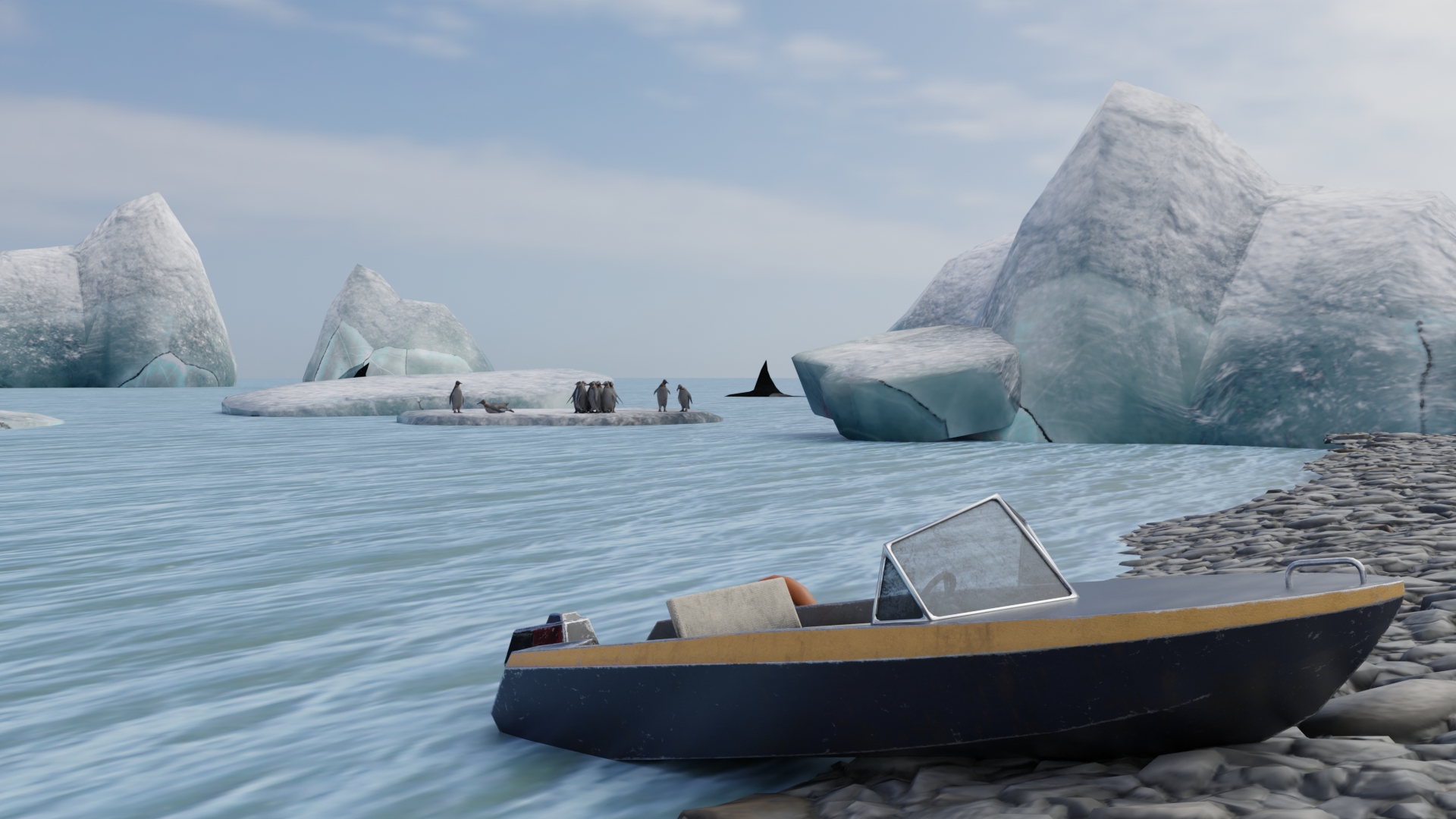
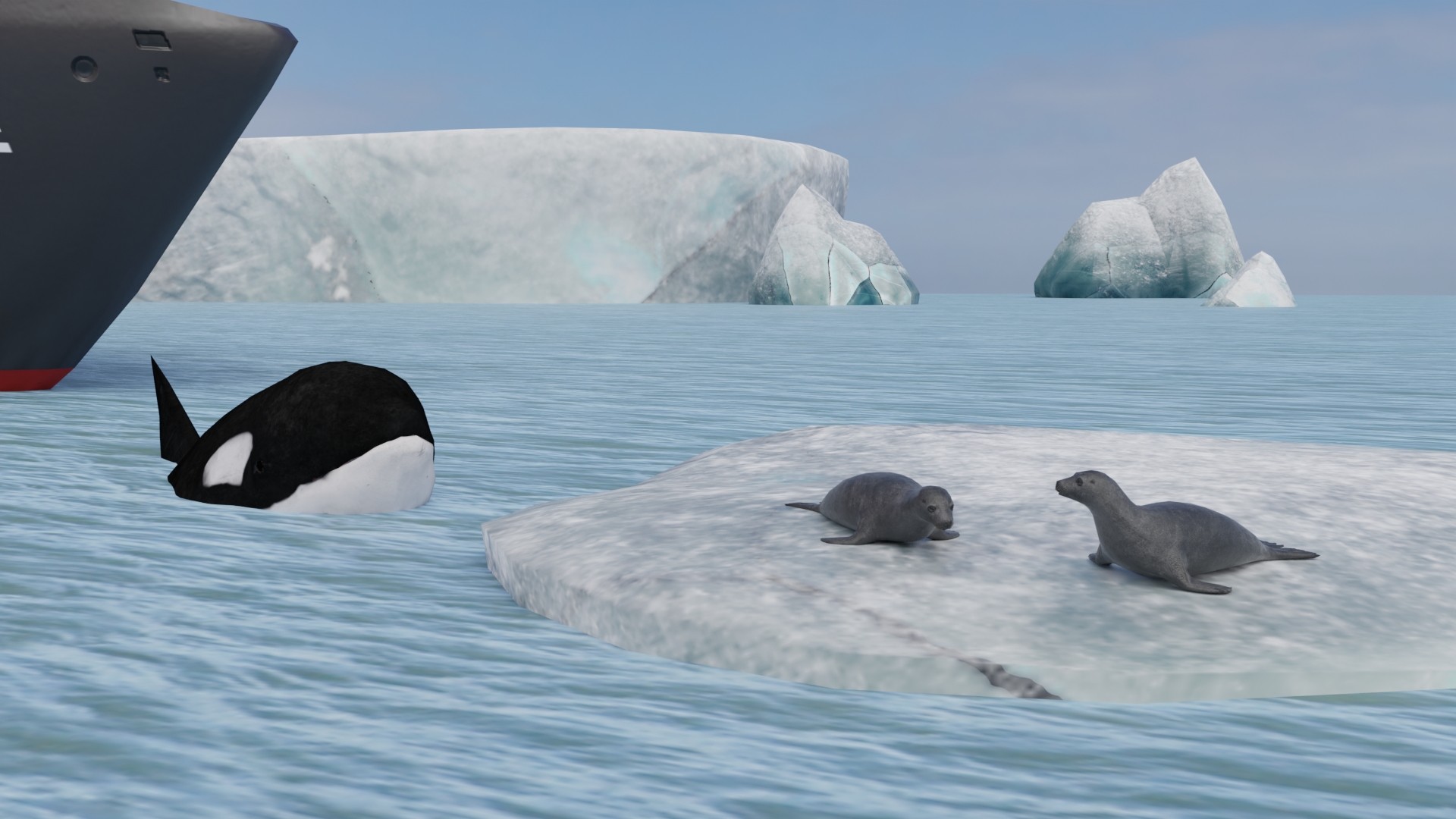
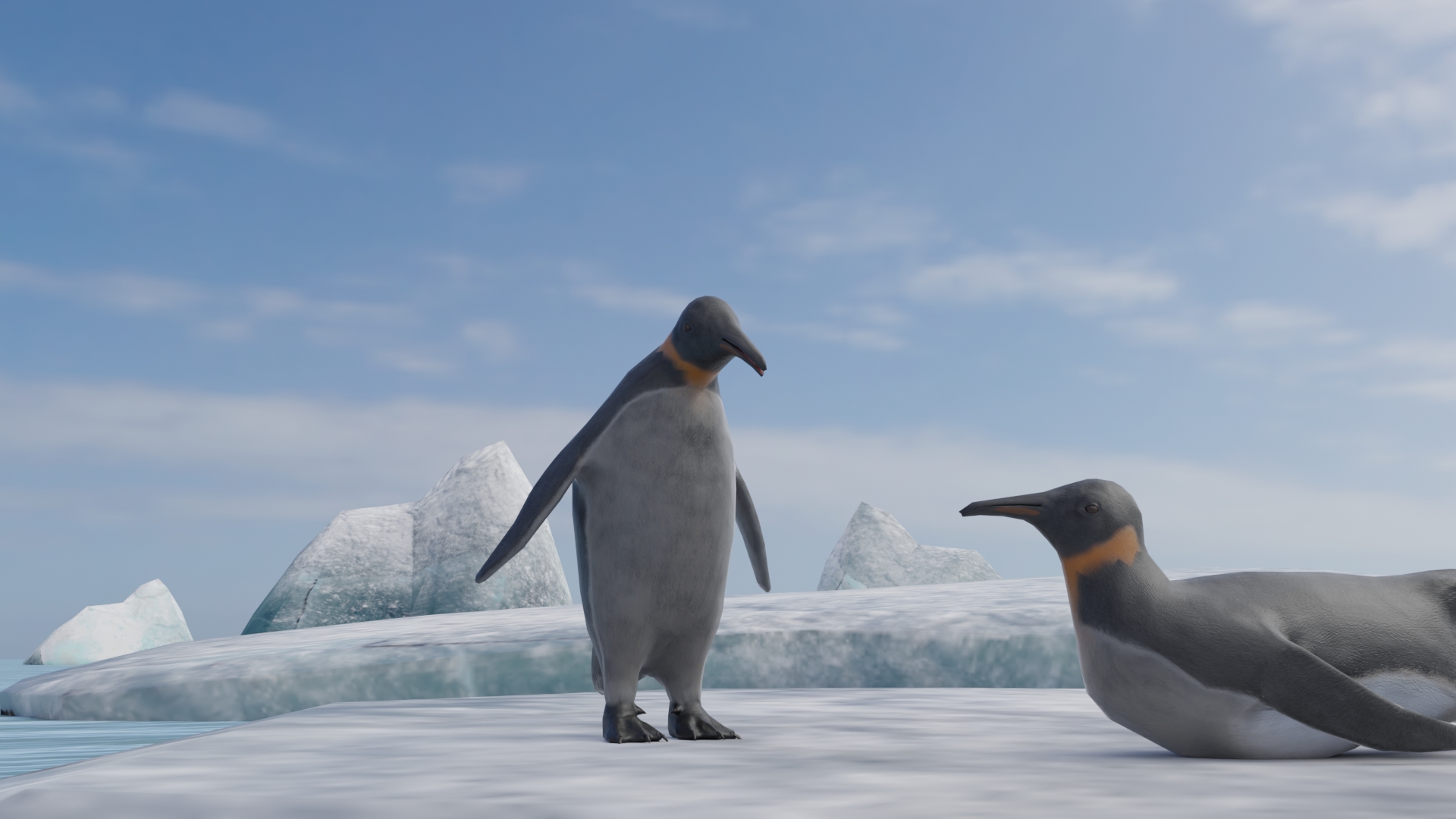

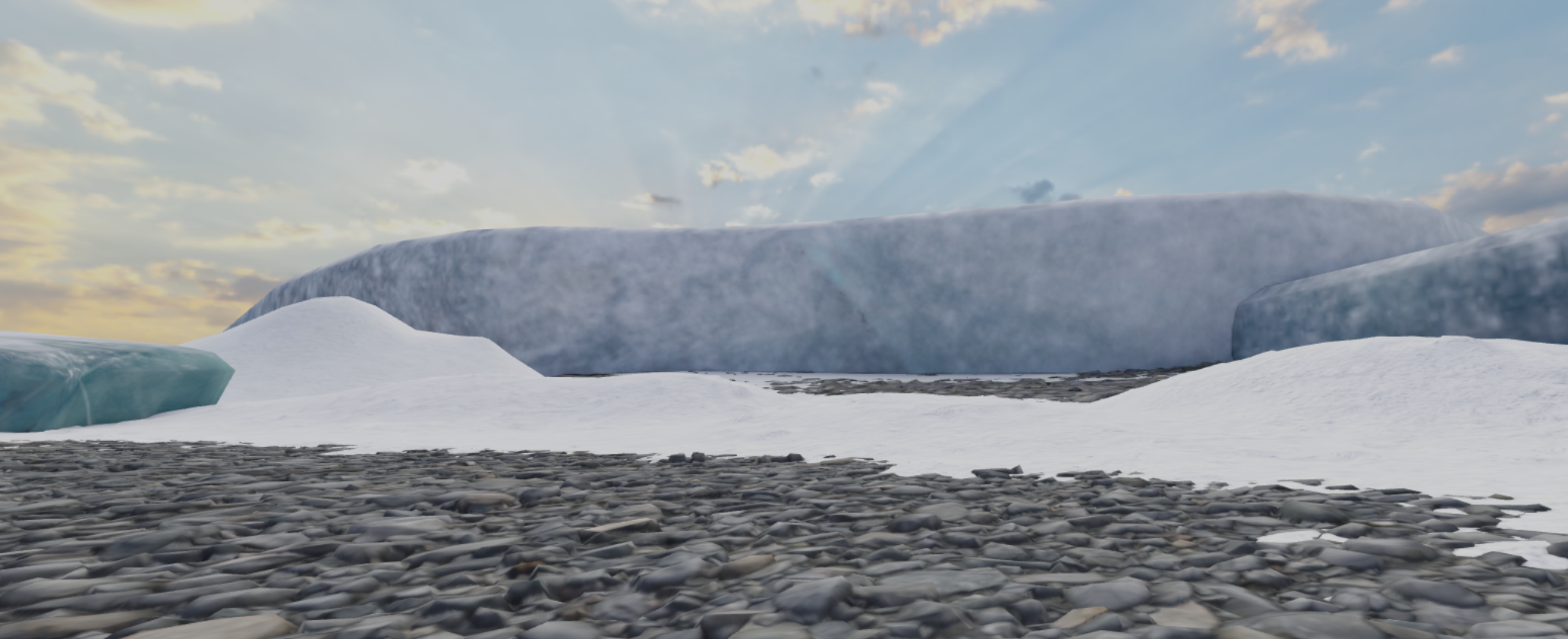
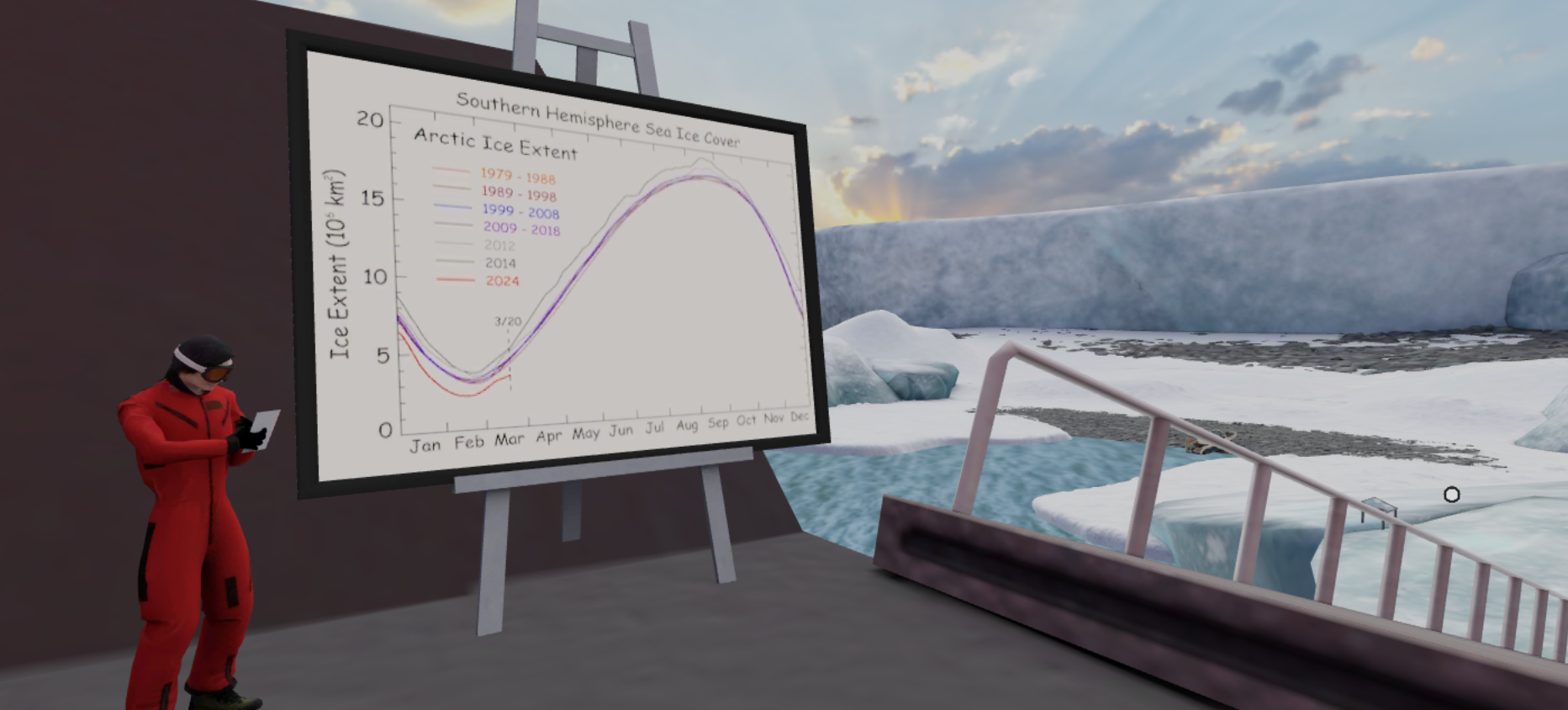
This experience is designed for students to discover the typical climate, landscape, and wildlife of the southern polar region, an ecosystem where land meets the Antarctic Ocean. Set in the summer season, when the region experiences months of daylight, students will observe how animals are adapted to this frozen and hostile world. # Learning Objectives 1: Identify features of the climate and landscape in the southern polar region{.info} 2: Describe the animals living in Antarctica and how they are adapted to their environment{.info} 3: Consider the importance of scientific research around Antarctica in connection to global climate concerns{.info} # Preparing for the Experience Before entering the Polar South experience, engage your students by asking what they know about Antarctica. Explain that Antarctica is the world’s southernmost continent, and the South Pole is located here – one of two places on the Earth’s surface that marks the planet’s axis of rotation in space. This position on our tilted, sphere-shaped Earth gives Antarctica its severe climate. Very little of the sun’s energy can reach here; it is the coldest and driest continent on Earth. **Preparation Questions** Encourage your students to think about the following questions to help guide them through the experience: What do you imagine the Antarctic landscape might look like?{.task} Why do you think ice and snow are so important to the health of our planet?{.task} What challenges do you think animals face from living in the Antarctic?{.task} Why is it important for scientists to explore remote regions like the Antarctic? What information do you think they might discover?{.task} # Step-by-Step Experience Guide Teachers can use this step-by-step guide to lead students through the experience once they are in the headset. Alternatively, students can use the guide below independently or in a group. # Ice!{.objective .objective1}  Your scientific research vessel has reached the coast of Antarctica, on a mission to scout the area and learn about all the things that make this environment unique. Descending the gangway, you’ll step ashore and meet a frozen land. In fact, almost the entire continent of Antarctica is covered in snow and ice, with only 0.4% remaining uncovered As you look around, take note of the different formations the ice can make. There are two main categories of ice in Antarctica, each created in a different way. Land ice is formed when snow piles up in layers and becomes more and more compressed. Sea ice happens when the ocean freezes and is much less thick than land ice. **Quick Fire Questions** Looking at the color of the ice, how can you tell that it has been compacted over time?{.task} Can you see the ice sheet rising above the land?{.task} # A Cold Desert?{.objective .objective2}  Though it may seem surprising, the Antarctic is considered a desert. This is because the continent receives a very low amount of rainfall. At the same time, 70% of the Earth’s fresh water is contained in the enormous ice sheets that blanket the landscape. Overhead, you will see the Antarctic skies in the afternoon light. **Quick Fire Questions** What season do you think it is here?{.task} Why do you think the sun remains so low on the horizon during this season?{.task} # Adaptations of Antarctic Animals{.objective .objective3}  Head out to the edge of the bay, where the chilly waters meet the coast. Temperatures in an Antarctic summer rarely rise above freezing point 32^o^F (0^o^C), and often plummet below -76^o^F (-60^o^C)in winter. It is a punishing place for the unprepared, but the animal inhabitants of the southern polar region are adapted to survive in the extremely harsh conditions. Looking out over the water, you will see king penguins and leopard seals. These creatures are known to inhabit the warmer parts of the Antarctic, living and feeding amongst the pack ice that drifts offshore. The leopard seals have a thick layer of blubber that prevents heat loss, especially when swimming. They are well-adapted to hunting underwater, with teeth that can filter out krill, and the ability to hold their breath for up to an hour by slowing their heart rate and circulation. Leopard seals also feed on penguins, who could find themselves the unfortunate victim of an ambush when they dive into the water. **Quick Fire Questions** Can you see how the penguins behave to protect them from the cold?{.task} Are there any other adaptations you notice in the seals or the penguins?{.task} # Apex Predator{.objective .objective4}  Looking closely, you might find a reason for the leopard seals to beware. Also known as killer whales, orcas are apex predators known for their aggressive hunting tactics. These aquatic mammals live permanently in water and have a layer of blubber under their skin, which they use as insulation. This helps reduce heat loss and maintain their body temperature in the cold ocean water. Orcas are incredibly smart and social animals, known for their teamwork when hunting. Seals are a common part of their diet, especially those resting on small floating ice sheets. When orcas spot a seal in this situation, they work together in an impressive way: swimming side by side just below the surface at high speed. This creates a strong wave that breaks the ice, causing the seal to fall into the water, where the orcas can easily catch it. **Quick Fire Questions** What strategy do you think the orca can use to catch leopard seals?{.task} How do you think a leopard seal is adapted to avoid capture by an orca?{.task} # Climate Concerns {.objective .objective5}  Over the past few decades, scientists have noticed that the ice shelf covering Antarctica has been shrinking. During the summer, the ice melts and recedes further than it used to, and the rate of melting is now much greater than it was 40 years ago. Evidence suggests that rising average temperatures are making warmer summer conditions more frequent. In the northernmost parts of Antarctica, the ice is melting faster than winter blizzards and freezing conditions can replace it, causing the overall ice cover to decrease. Head back to The Polar Opposite and examine the graph before you set sail! **Quick Fire Questions** What does the graph show about recent levels of sea ice in the Antarctic?{.task} Why do you think it is important to record and monitor this environment?{.task} # Cross-Curricular Links **History** Explore the paths of early Antarctic explorers, like Scott, Shackle or Amundsen. Write a diary entry from their perspective while referring to things you saw in the VR scene. **Social Studies** Research the role of Antarctica in scientific research and discuss the issues that led to the creation of the Antarctic Treaty. Illustrate a short timeline of the key events that marked this significant agreement between nations. ## Download the Science Teacher Notes Below [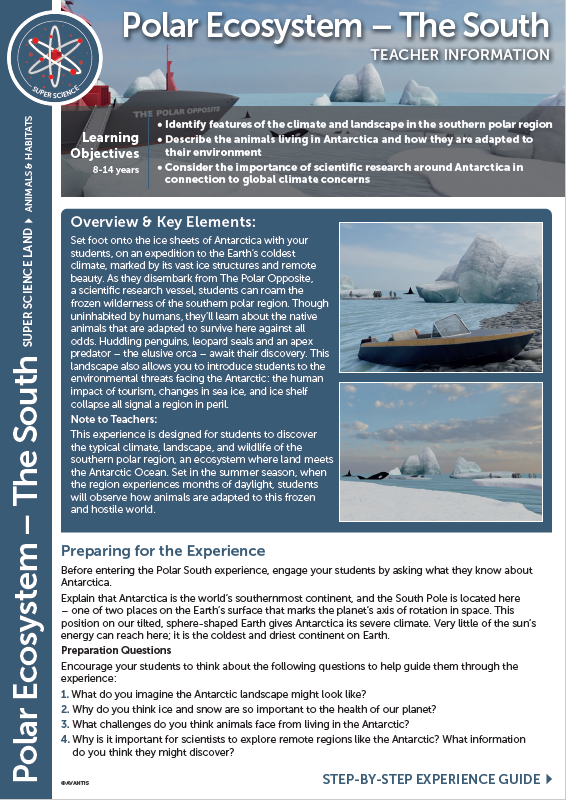](https://avnfs.com/qGlXer0eH7Mqdi_HT7nKCi6e13bvUCtk0yakMV2LkMY?size=2475346&type=application%2Fpdf&name=Polar+Ecosystem+%E2%80%93+The+South+SS+Version+Teacher+Notes+-+Teacher+Version.pdf) ## Download the Geography Teacher Notes Below [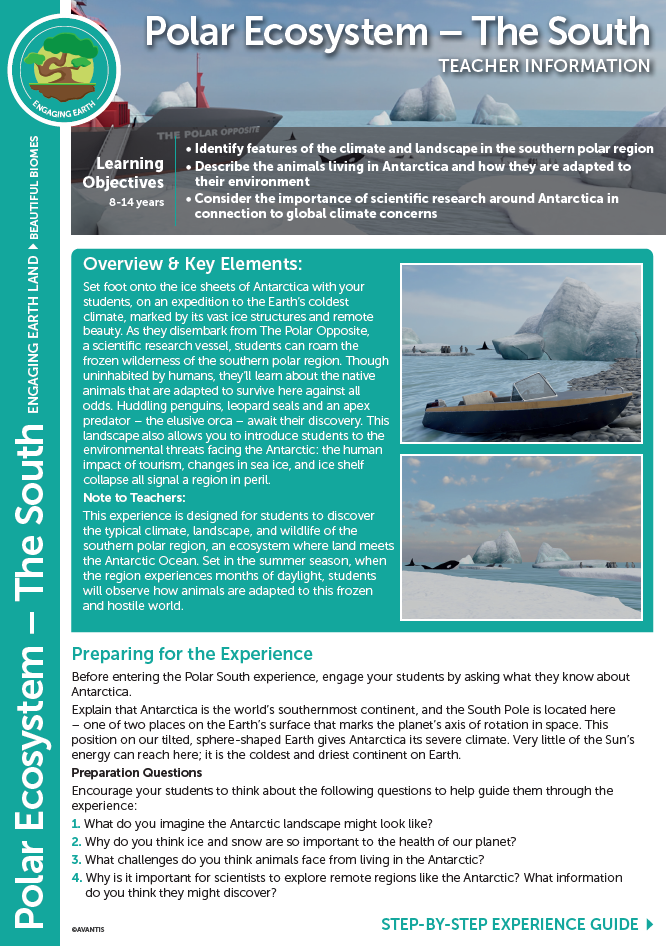](https://avnfs.com/ekAIoe5yKE3S3JW769lymDOfe16YRTtSsL1KEzrlZ8c?size=2450664&type=application%2Fpdf&name=Polar+Ecosystem+%E2%80%93+The+South+EE+Version+Teacher+Notes+-+Teacher+Version.pdf) ## Download the Science Student Notes Below [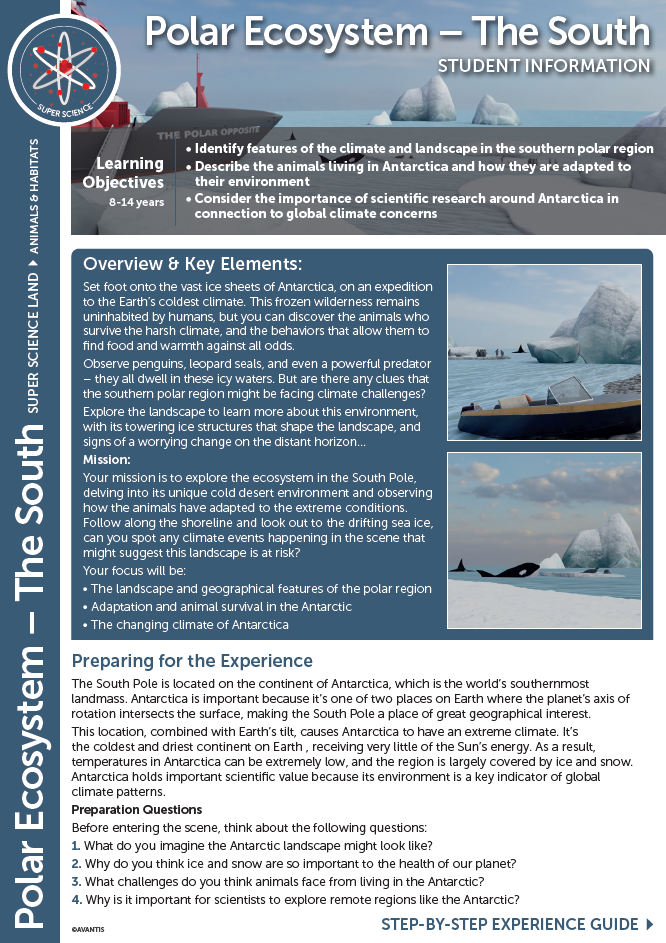](https://avnfs.com/xHnXRqXMbRSPGF3IzHAOXfugQoW52BCgdyznUIdia5I?size=2327893&type=application%2Fpdf&name=Polar+Ecosystem+%E2%80%93+The+South+SS+Version+Teacher+Notes+-+Student+Version.pdf) ## Download the Geography Student Notes Below [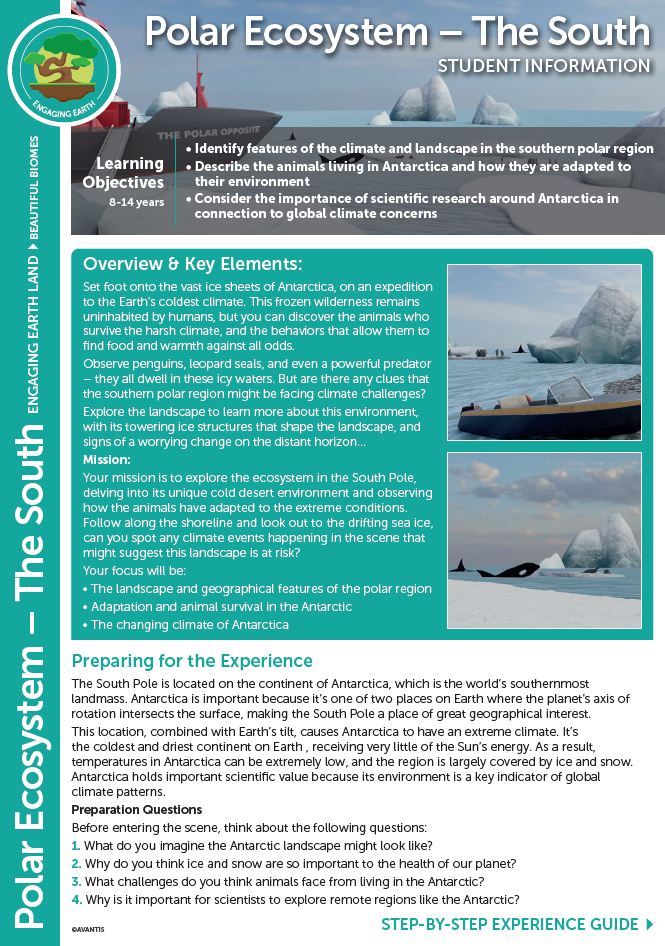](https://avnfs.com/Wx6WAwuVx9PdibXsPG4uckbR5P_Quc3AMO4UT7iA9Ck?size=2268247&type=application%2Fpdf&name=Polar+Ecosystem+%E2%80%93+The+South+EE+Version+Teacher+Notes+-+Student+Version.pdf)